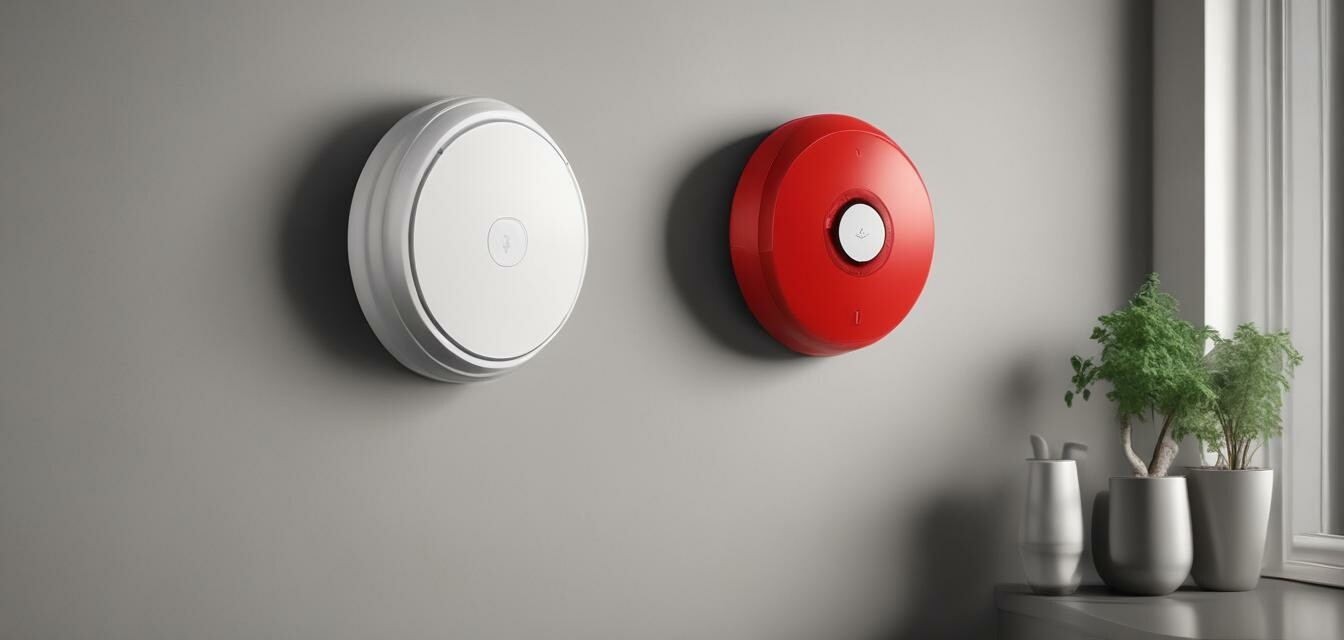
Top Reasons to Upgrade Your Smoke Alarms
- Upgrade to newer smoke alarms for enhanced safety features.
- Wireless interconnected alarms improve alert systems.
- Long-lasting battery solutions reduce maintenance hassles.
- Smart smoke alarms offer connectivity and monitoring via mobile devices.
As an electrician or a homeowner, ensuring safety in residential spaces is paramount. An essential step toward securing a safer home is upgrading your smoke alarms. This guide delves into the benefits of newer smoke alarm technologies and how they can enhance safety within your premises.
1. Improved Technology in Smoke Alarms
Modern smoke alarms come equipped with advanced technology, aimed at effectively detecting fires and improving response times. Below are some key advancements that set them apart from older models:
| Feature | Modern Alarms | Traditional Alarms |
|---|---|---|
| Detection Method | Photoelectric and Ionization | Primarily Ionization |
| Interconnection Capability | Wireless Interconnected | No Interconnection |
| Battery Life | Up to 10 Years | 1-2 Years |
| False Alarm Reduction | Advanced Sensors | Limited |
2. Enhanced Safety with Interconnected Systems
With advancements in connectivity, modern smoke alarms can interconnect with one another. This means if one alarm detects smoke, all interconnected alarms will sound, providing a crucial alert throughout the home. This feature is vital for larger homes or multi-storey living. The LEVSUPTY 1 Pack Wireless Interconnected Photoelectric Smoke Alarm exemplifies this technology:
LEVSUPTY Wireless Interconnected Smoke Alarm
This smoke alarm features a wireless interconnected system, lasting lithium battery, and photoelectric sensor for improved fire detection.
Learn More3. Long-lasting Battery Solutions
Another significant improvement is the advancement in battery technology. Newer smoke alarms often come with lithium batteries that last up to 10 years. This means less hassle with frequent battery replacements and more reliability. The LEVSUPTY model mentioned above is equipped with a built-in lithium battery providing continuous power.
4. Smart Features for Modern Homes
Consider installing smart smoke alarms which can connect to your home Wi-Fi and send alerts to your smartphone. This allows you to monitor your smoke alarms even when you’re away from home. Some key features include:
- Push notifications for smoke detection.
- Self-testing capability.
- The ability to silence alarms remotely.
5. Importance of Compliance and Certainty
Upgrading to modern smoke alarms ensures compliance with local safety regulations. For instance, the LEVSUPTY model complies with AS 3786:2014, reassuring homeowners of its reliability and safety standards. Always ensure your smoke alarms meet the latest regulations relevant to your area.
6. Save on Maintenance Costs
Investing in modern smoke alarms might seem like a significant upfront cost, but these alarms are designed for longevity. By utilizing better materials and technology, they often require less maintenance and fewer replacements compared to older models. Thus, you will save money in the long run.
Conclusion
In conclusion, upgrading your smoke alarms is essential for enhancing safety in residential spaces. With features like wireless interconnectivity, long-lasting batteries, and smart technology, newer smoke alarms provide peace of mind and effective fire detection. Don't wait until it's too late – consider upgrading your smoke alarms today to ensure your home is as safe as possible.
Pros
- Enhanced fire detection capabilities.
- Improved safety with interconnected systems.
- Long battery life reduces maintenance efforts.
- Smart technology allows for remote monitoring.
Cons
- Higher initial investment compared to traditional alarms.
- Reliance on technology may not suit all users.
Key Resources for Further Learning
For more information on smoke alarms and safety equipment, check out these useful resources:
